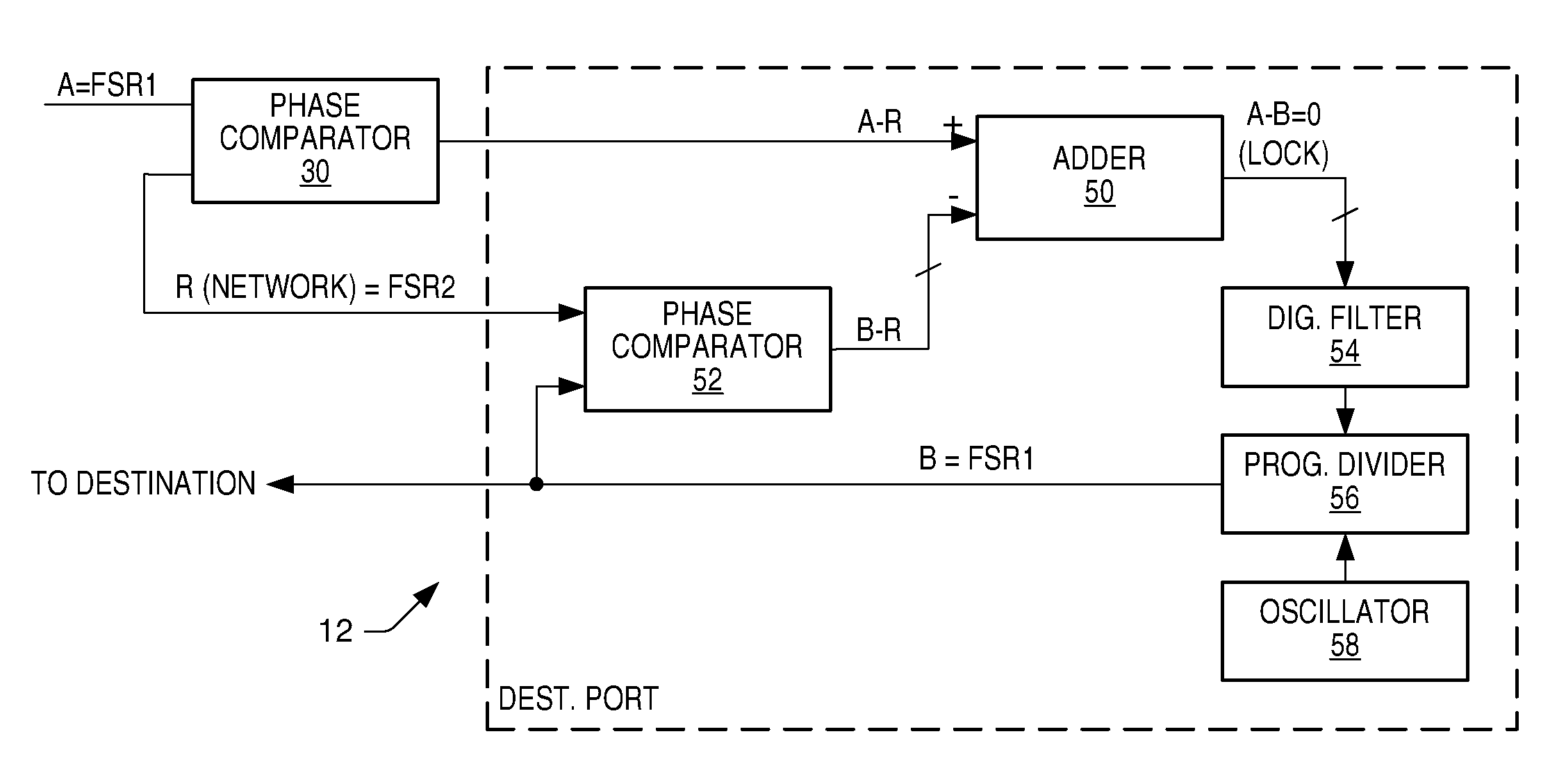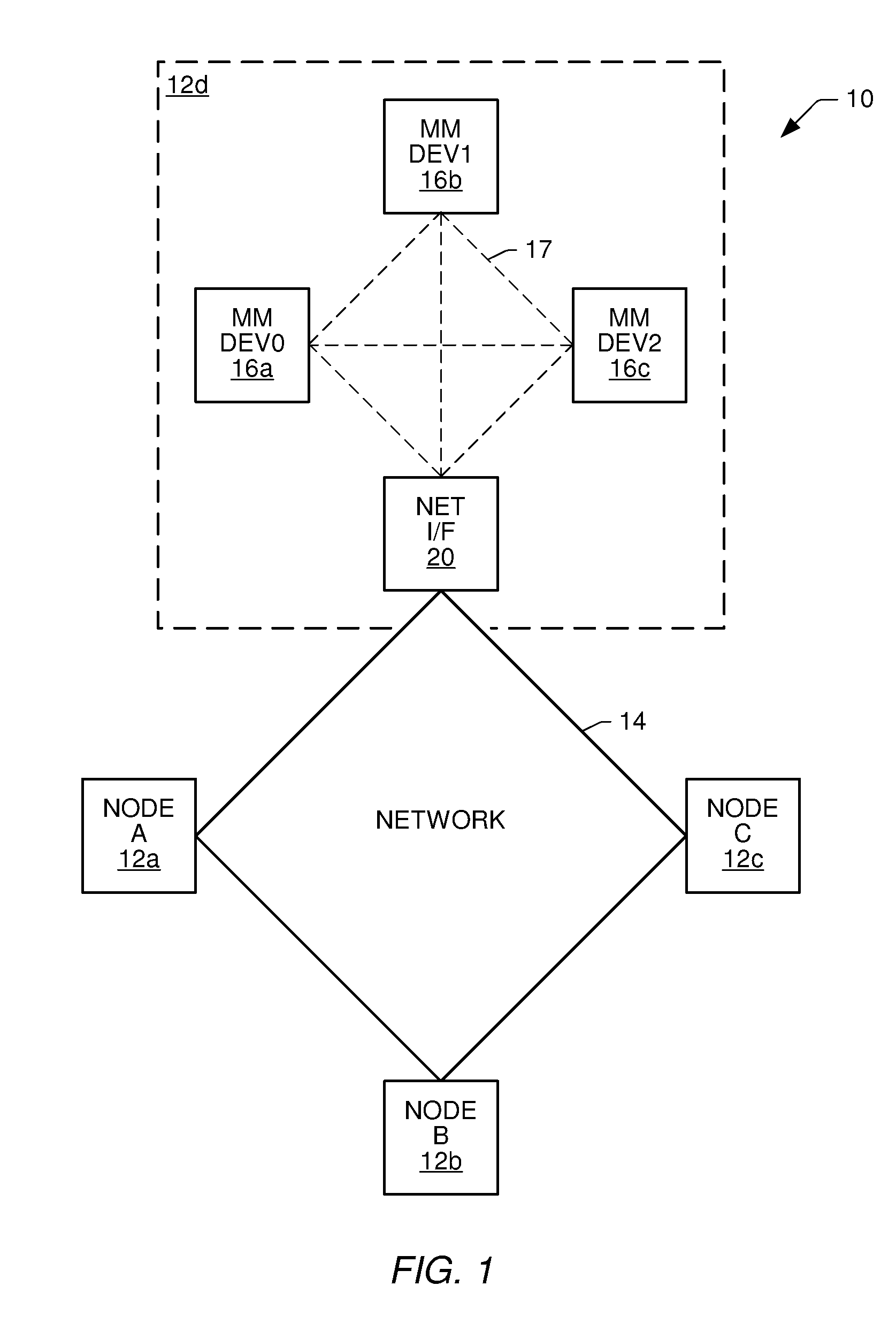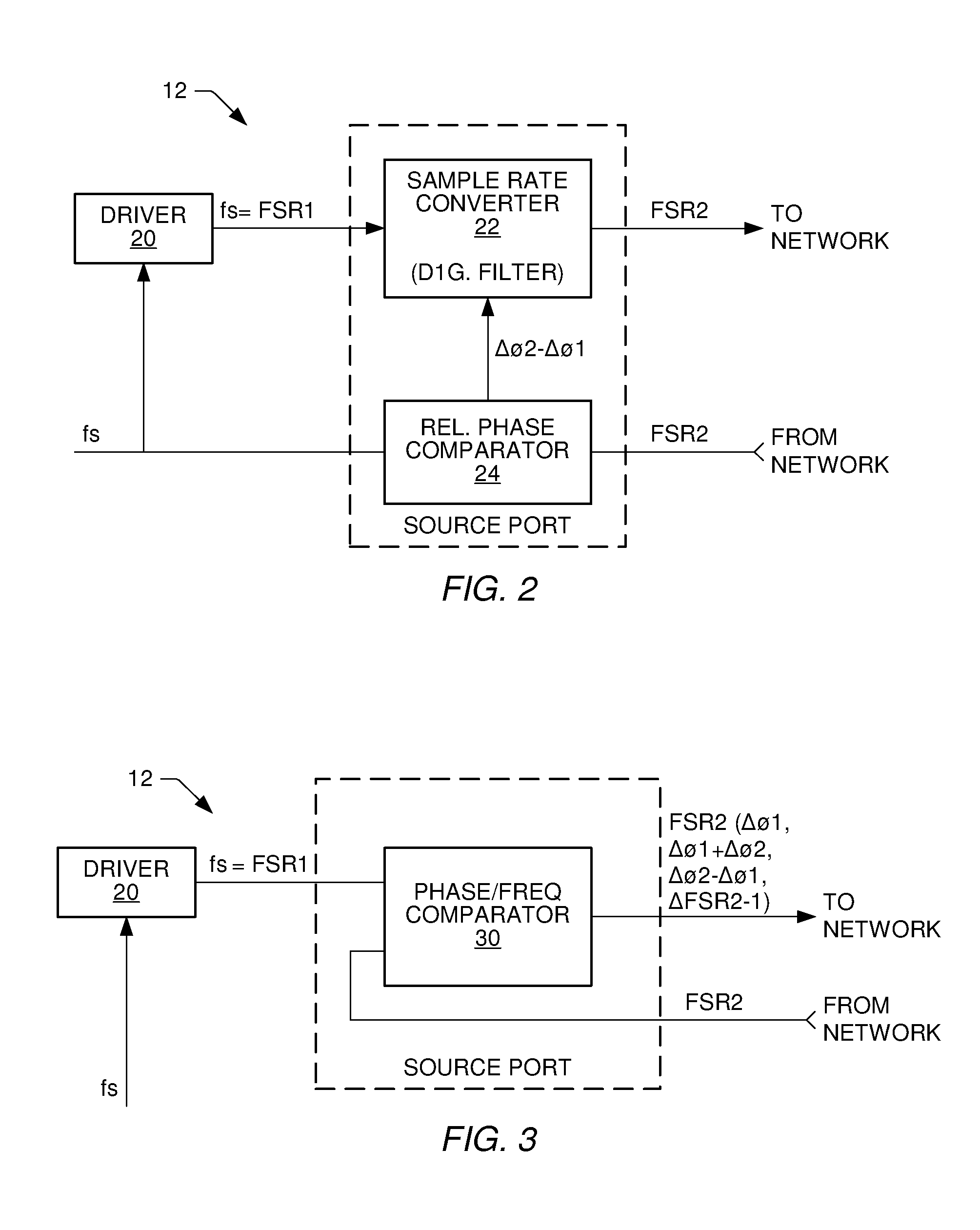Communication system and method for sample rate converting data onto or from a network using a high speed frequency comparison technique
a high-speed frequency comparison and data conversion technology, applied in the field of communication systems, can solve the problems of too high cost of sample rate conversion, and achieve the effect of accurately reproducing and increasing the accuracy or resolution of frequency differences
- Summary
- Abstract
- Description
- Claims
- Application Information
AI Technical Summary
Benefits of technology
Problems solved by technology
Method used
Image
Examples
Embodiment Construction
[0036]Turning now to the drawings, FIG. 1 illustrates one example of a communication system 10. Communication system 10 includes an interconnected plurality of nodes 12. For sake of brevity, only four nodes are shown. However, it is understood that system 10 can include more than four nodes and can also include multiple interconnected networks. The network shown in FIG. 1 is a ring or loop. However, it is also understood that the network backbone can be bus, star, or any other topology available to a network. Coupled between nodes 12 are corresponding transmission links 14. Transmission links 14 can be optical, acoustic, or electrical (wired or wireless).
[0037]Each node 12 is preferably localized to a particular area. Within each node is at least one multimedia device. As shown in node 12d, a node can have more than one multimedia device 16. If more than one localized device 16 is present, then a local transmission line or local bus can be used between multimedia devices 16 in eithe...
PUM
 Login to View More
Login to View More Abstract
Description
Claims
Application Information
 Login to View More
Login to View More - R&D
- Intellectual Property
- Life Sciences
- Materials
- Tech Scout
- Unparalleled Data Quality
- Higher Quality Content
- 60% Fewer Hallucinations
Browse by: Latest US Patents, China's latest patents, Technical Efficacy Thesaurus, Application Domain, Technology Topic, Popular Technical Reports.
© 2025 PatSnap. All rights reserved.Legal|Privacy policy|Modern Slavery Act Transparency Statement|Sitemap|About US| Contact US: help@patsnap.com



